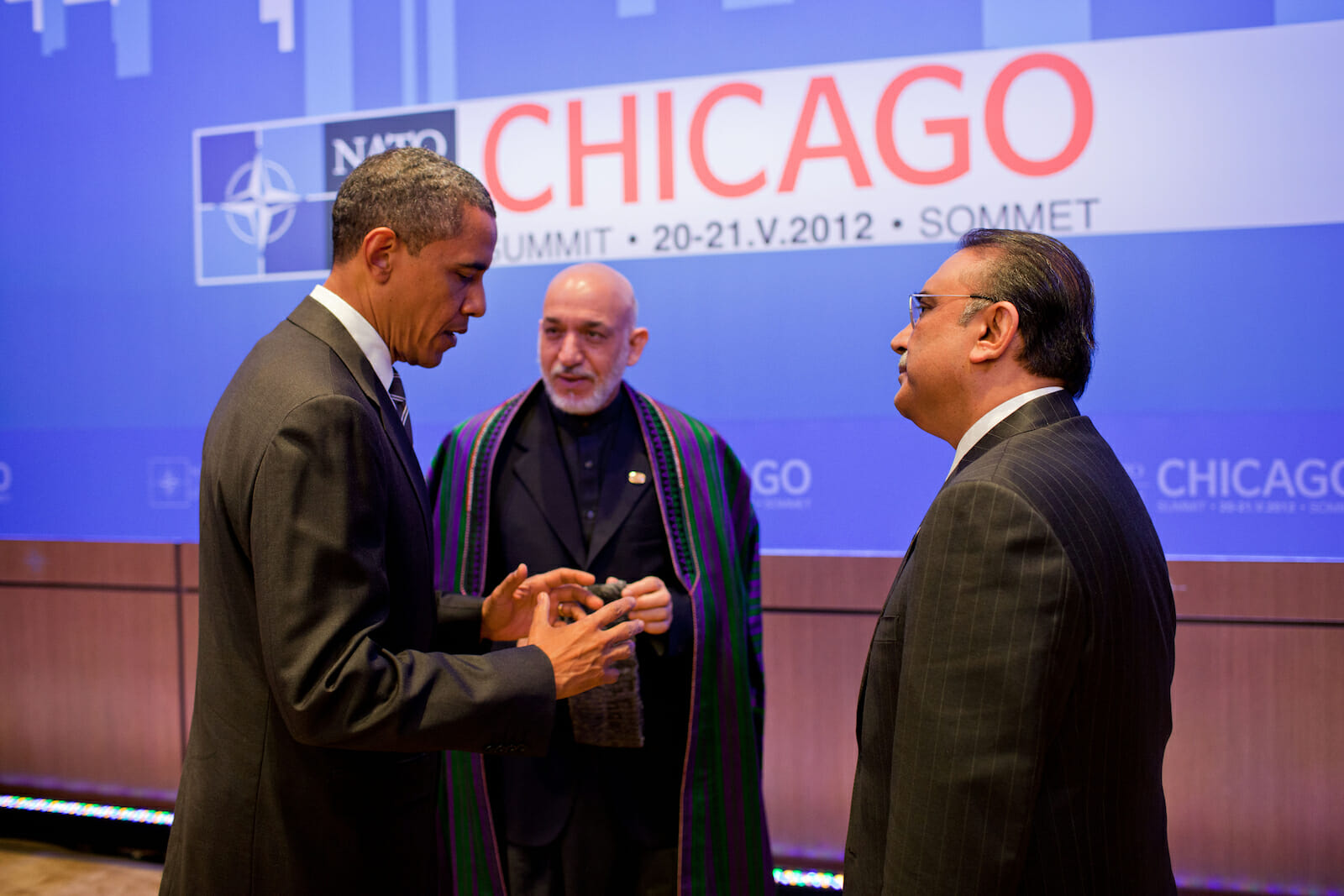
NATO and the U.S. Should Settle for a ‘Limited-Win’ in Afghanistan
Rising disenchantment with the “good war” in Afghanistan ultimately stems from the unrealistically high expectations set by NATO in the early years of the conflict, as well as a rising degree of frustration at the lack of tangible, sustainable progress. Afghanistan was always going to be an impoverished, conflict-ridden, landlocked, and fractured country; it was never going to be Switzerland, or even the Philippines, of Central Asia.
Last-ditch attempts at nation-building, after years of under-resourcing due to the Iraq war, were simply doomed to fail. Although NATO cannot create the Afghanistan it once hoped to build, it is probably still able to achieve some narrow security objectives past 2014, a strategy somewhat derisively known as “Afghanistan Good Enough.”
What this strategy entails has not been fully articulated, but we can surmise at least four general elements: Disrupt and/or neutralize terrorist operations, organizations, personnel and infrastructure, and prevent the further establishment of terrorist safe-havens in the AfPak region. Prevent the Taliban or related groups from regaining control over large swaths of the country, particularly the major population centers. Curb, to the extent possible, the corruption of the Karzai government, and try to enforce some modicum of accountability on Afghan officials. Contain instability in the AfPak region, with a particular focus on preventing serious destabilization of nuclear-armed Pakistan.
Other objectives such as establishing control over the whole of Afghanistan, ridding the country of warlords, instituting fully functioning democracy, eliminating government corruption, eradicating poppy cultivation, sustaining robust economic growth, and achieving Western standards of civil, political, and human rights, are no longer realistically attainable – to the extent they ever were.
As laudable as these objectives are, to achieve them would require decades of commitment and a huge sum of resources that the West is unable to provide. However, it may be feasible for NATO to achieve a more limited set of goals.
What Might Be Achieved
The increasing effectiveness of counterterrorist operations – especially the reliance on drone strikes – is well known. These operations require a relatively small number of specialized personnel. With a modest commitment of special operations, intelligence, and aerial resources, NATO can keep Al Qaeda on the run and ensure that terrorists are unable to reestablish safe havens in Afghanistan and Pakistan. It is also possible for the West to prevent the Taliban or other groups from regaining control over large parts of the country. It would only take a modest number of troops backed by air power to prevent the insurgents from holding ground and launching large-scale military operations. After all, in 2001 the Taliban rapidly crumbled in the face of aerial bombardment and a force of a few thousand CIA agents, Special Operations personnel, and US Marines.
Additionally, while NATO cannot hope to eliminate corruption in the Afghan government, it may be able to temper it to some degree. The West does not need much from the Afghan government – only enough to justify to the world and to the Afghan people that it is a better alternative than the Taliban. Although among the lowest common denominator of options, the option here is not between George Washington and Hamid Karzai, but between Hamid Karzai and Mullah Omar. As corrupt and unpredictable as the Karzai government is, it is still a far better than either a civil war or a government run by Islamic extremists.
Lastly, the NATO mission in Afghanistan will attempt to contain Afghan instability and prevent it from threatening other nations in the region. Unfortunately, Pakistani instability is being driven by multiple sources, many of which are internal in nature and cannot be impacted by outsiders. Moreover, some NATO operations, such as drone strikes, may actually be contributing to instability in the country. However, having forces nearby in Afghanistan may prove helpful if the situation in Pakistan deteriorates to a point where there is a threat of the country’s nuclear arsenal.
Threads of Optimism
Although most of the news coming out of Afghanistan is disheartening, there are some reasons to be optimistic that a strategy of a ‘limited-win’ may prove successful. Firstly, the surge of coalition troops has put the Taliban on the defensive in many parts of the country and brought many areas under government control. Additionally, there are indications that the Afghan Army is rapidly improving. While the Afghan police still need improvement, many units of the Afghan army enjoy a reputation for discipline and effectiveness. This is helped by the fact that the Taliban is unpopular in many parts of the country, especially in the north, where opposition to the Taliban is widespread.
So long as the coming withdrawal of NATO forces is truly not a rush for the exit, a transition of security from NATO to the Afghans could prove successful, but this will clearly require much-sustained discipline and effort on the part of the Afghan government. The presence of Western troops is resented in many parts of the country, and their withdrawal could ease tensions and produce additional credibility to the Afghan government and military officials.
Additionally, the withdrawal of Western troops could lead to a fracturing of the insurgency, however unlikely that may seem at this time. The insurgent groups that are sometimes generically referred to as the “Taliban,” are really a network of several affiliated extremist organizations, including the Haqqani network and Hezb-e-Islami Gulbuddin. This network is hardly a unified bloc and there have been periodic reports of infighting within the insurgent ranks. Indeed, it is this orientation toward being fractured, in combination with the many criminal activities these groups engage in, that have caused many to compare the Taliban and its affiliates to the Mafia.
The withdrawal of Western forces and the absence of a common enemy could exacerbate fractures between rival insurgent organizations. Moreover, a reduced Western presence in Afghanistan will prompt the war to morph in focus from a West vs. Muslim conflict to a Muslim vs. Muslim conflict. This transformation could have serious consequences for Taliban fundraising activities in the broader Muslim world.
While the picture painted by most of the western media in Afghanistan is pessimistic, the way forward in Afghanistan, even under a strategy of a limited-win, will neither be easy nor assured of success. There remains a significant possibility that the West is simply too war-weary to maintain even modest commitments of troops and funds past 2014. Moreover, even if the strategy of a limited-win is fully realized, the West is still left propping up a corrupt and ineffectual government for an indefinite period of time. Nonetheless, abandoning Afghanistan entirely will have serious adverse consequences for the stability of the region and the security of the West, which is why a strategy of a limited-win may prove the better of several bad alternatives.
The medium-term future is surely likely to remain one of limited financial and military resources, as the number and nature of trouble spots around the world proliferate. Afghanistan cannot remain on life support indefinitely; after a decade of commitment from the West, the country must learn to stand on its own two feet. Although the possibility remains that the Taliban and other extremist organizations may regain some ground following the NATO withdrawal, it is our belief that the Afghan government and Afghan people have learned enough to know that their own long-term interest does not reside with the extremists. For that reason, we expect a slow and gradual strengthening of pro-western sentiment in Afghanistan, which should lend credence to the theory of a limited win.
